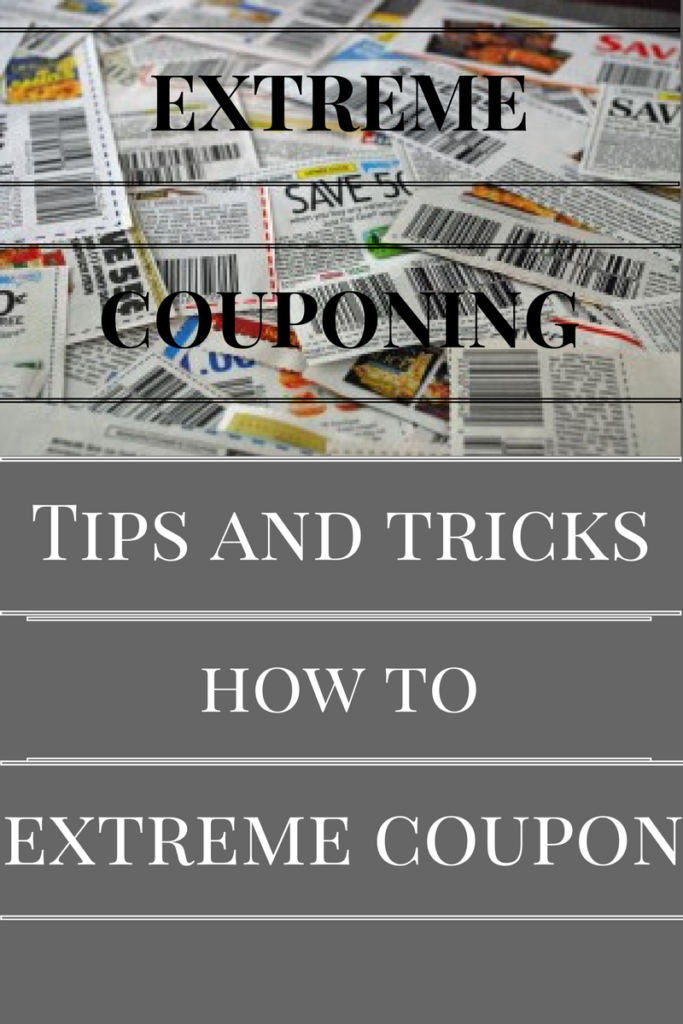Extreme couponing be frugal
Just to make sure we’re starting from the same point, couponing is the practice of using coupons to discount the price of a particular item. Typically, coupons are associated with groceries, but they come out for other items too. A coupon is good for is usually a name brand item. The coupon gives you the time frame during which you can use it. It tells you the maximum number of items you can buy at the discounted price, and frequently lists any restrictions for using it—not combining it with another discount is a common one. Understanding basic couponing is essential to extreme couponing.
If the coupon is for something you would buy anyway , couponing will save you money: If you normally buy the 35oz. bottle of Hunt’s Ketchup for $1.67 and use a coupon for .50 off, you will save .50 on your purchase. If you normally buy the generic version at $1.00 for a 35oz bottle, you will lose .16 on the purchase. (You’re spending $.16 more than you normally do.) That was a small example. Consider… If you bought 20 items and lost .16 on each of them, you’re losing $3.20 in all. And, this could be an often recurring event. (Think about it from the distributor’s point of view: A coupon’s primary purpose is to entice you to buy their product.) Your purpose for couponing is to save money. If you’re spending more, you’re losing money, and if your intent is to be frugal, you’re doing something wrong. Use coupons to enhance your frugal lifestyle plan—not to undermine it.
So… What is extreme couponing?
Extreme couponing is taking full advantage of coupons by combining them with other discounts. Extreme couponing includes taking advantage of in-store sales, double coupons, and any other appropriate discounts. Note: I know that in the first paragraph of this post I mentioned that using an additional discount was often prohibited, but there are still times it’s allowed.
Extreme couponing is a battle campaign. It requires a plan, dedication, and diligence.
Strategies to maximize your extreme couponing efforts
Do a side by side price comparison of product brands to ensure you are getting the best deal. Consider any in-store sales or “manager specials” that you can combine with a coupon. Sometimes stores will offer their own discounts. For example, you may find an offer like “$5 off on purchases of $30 or more.” In this case you can use your coupons and get the store discount as long as your total at checkout meets the minimum required purchase.
We take competitor’s coupons
Another deal to look for is a store accepting competitors’ coupons. (Sometimes, all you have to do is show the cashier a competitor’s ad listing an item priced less than it is where you’re shopping and your purchase will be discounted.)
Use double coupons when possible. Double couponing (example of extreme couponing) is the manufacturer issuing a coupon and the store matching it with its own discount. The worth of a .50 coupon becomes $1.00. (Note: In my area this practice is declining, but in a small town nearby the grocery still makes the offer on Thursdays. You absolutely know that if I have business in that town, I arrange to do it on Thursdays.)
Sales cycle is the next level in extreme couponing
This is the next level of extreme couponing—timing. Timing makes extreme couponing a campaign. Extreme couponers are familiar with the sales cycles of the stores they shop, and they time their purchases coincide with in-store sales and specials.
Timing the in-store sales with the use of double couponing can yield big savings. This is how it works: The store you shop has an in-store sale of certain items you normally buy. (Many of these items are sale-priced regularly—about every 6-8 weeks.) While the items are on sale, extreme couponers will stock-up. They’ll buy much as they can at the sale price and apply coupons, double coupons, and any other discounts that apply. By the way, these are great times to use those “buy _______ and get _______ at half price” coupons too. It’s also a good time to buy items (that will keep) that are never on sale when you really need them—like special spices for holiday baking. Shopping like this, you can save so-o-o much money.
The stockpile (What! We aren’t done yet?)
If you’ve read any of my previous posts about grocery shopping, you know I invariably get around to stockpiling. I really am an advocate of the in-home store. I also know that I’ve said that I only keep a couple of months supply of my regularly used items on hand, but it hasn’t always been that way. My household now consists of me and my wife; when our kids were at home we stocked a lot more, mostly because we felt more vulnerable to financial crises that might “cramp our style” of eating: It’s hard to convince hungry children that they aren’t starving when the urge to eat hits. But, I want to make a couple of points here. The first is that by timing your purchases and combining coupons with other discounts, you can often stock name brand items at a price lower than that of their generic counterparts. The second has to do with my practice of buying these goods from myself (See my post how to save money on groceries .) I usually advocate paying myself full-price when I check an item out of my storeroom—the purpose being I can continuously replace my funds for serendipitous finds. However, since these “luxury” (name brand) versions get purchased really inexpensively, I charge myself only what I would have paid for the usual generic version.
A couple of things to make this easy
Regularly cull through your coupons. Nothing is more frustrating than finding a deal that isn’t one—because your coupon is expired.
Frequently review your on hand stock, upcoming needs, and what you have in the way of coupons. Written plans can be a help—no use missing out on a good deal.
Do know the couponing policies of the stores you shop (It’s ok to ask.) and abide by them. Nothing is more unpleasant than a disagreement at checkout.
Conclusion
We use coupons to save money. Extreme couponing— combining coupons, double couponing, and sales—can maximize the savings.
Never miss another post follow me on Facebook


